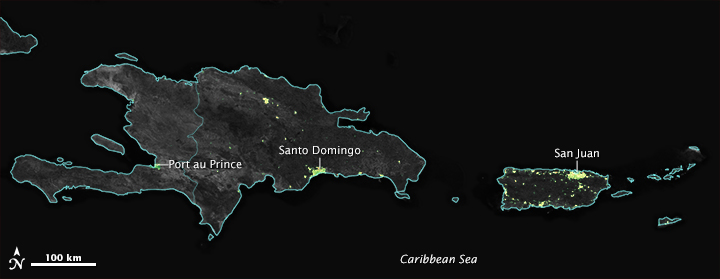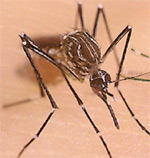Archive for March, 2016
A case of CNS infection with ZIKV that was associated with meningoencephalitis in an adult.
Friday, March 11th, 2016The Aedes mosquitoes that transmit the virus on Puerto Rico have developed resistance to permethrin.
Friday, March 11th, 2016CORDS: Connecting Organizations for Regional Disease Surveillance
Friday, March 11th, 2016CORDS Website
Connecting Organizations for Regional Disease Surveillance (CORDS) is a unique, international non-governmental organization building information exchange among disease surveillance networks in different areas of the world. CORDS is a network of networks.
CORDS promotes global exchanges of best practices, surveillance tools and strategies, training courses, innovations, successful operating procedures, case studies and other technical data.
CORDS will speed the development, capabilities and sustainability of all its network members to improve global surveillance, to detect disease outbreaks early and mitigate their global impact.
CORDS has six founding regional disease surveillance networks, with plans to expand.
CORDS complements the work of the leading global human, animal and food health organizations and is committed to promote the One Health approach.
At least 5 people have been killed and several others wounded in a shooting late Wednesday in a suburb outside Pittsburgh.
Thursday, March 10th, 2016Flu levels in the Northern Hemisphere continued to rise, especially in Europe and North America.
Thursday, March 10th, 2016
Summary
In the Northern Hemisphere high levels of influenza activity continued with influenza A(H1N1)pdm09 predominating and an increase in the proportion of influenza B viruses detected. In the Southern Hemisphere and in tropical countries influenza activity was generally low.
- In Europe ongoing high levels of influenza activity continued to be reported, although in some countries activity seemed to have peaked already. Influenza A(H1N1)pdm09 accounted for most virus detections with an increase in the proportion of influenza B detections. In Russian Federation and Ukraine, elevated SARI activity continued but at lower levels compared to previous weeks.
- In North America, influenza activity increased further with influenza A(H1N1)pdm09 predominating in Canada and United States of America and A(H3N2) in Mexico.
- In Northern/Temperate Asia, influenza activity remained high but seemed to have peaked already in some countries.
- In Western Asia, influenza activity continued to decrease. Oman reported ongoing low levels of both influenza A(H1N1)pdm09 and influenza B viruses.
- In Africa influenza A(H1N1)pdm09 activity was reported in northern Africa.
- In tropical countries of the Americas, Central America and the Caribbean, influenza and other respiratory virus activity were overall at low levels, except Jamaica, and Puerto Rico with high but decreasing influenza activity.
- In South East Asia, ongoing low influenza activity was reported during this period.
- In the temperate countries of the Southern Hemisphere influenza activity remained low at inter-seasonal level.
- National Influenza Centres (NICs) and other national influenza laboratories from 98 countries, areas or territories reported data to FluNet for the time period from 08 February 2016 to 21 February 2016* (data as of 2016-03-04 07:20:12 UTC).The WHO GISRS laboratories tested more than 158158 specimens during that time period. 42727 were positive for influenza viruses, of which 33745 (79%) were typed as influenza A and 8982 (21%) as influenza B. Of the sub-typed influenza A viruses, 19269 (87.7%) were influenza A(H1N1)pdm09 and 2709 (12.3%) were influenza A(H3N2). Of the characterized B viruses, 589 (24.4%) belonged to the B-Yamagata lineage and 1821 (75.6%) to the B-Victoria lineage.
The European Centre for Disease Prevention and Control (ECDC): So far it’s not clear what stage of pregnancy fetuses are most vulnerable to Zika virus and, in addition, all 3 trimesters should be considered at risk.
Thursday, March 10th, 2016WHO: Tools prioritized as the most viable options to help fight the spread of Zika virus in the immediate future:
Thursday, March 10th, 2016
WHO and experts prioritize vaccines, diagnostics and innovative vector control tools for Zika R&D
67 groups working on experimental products
After a three-day consultation on Zika research and development, international experts, convened by WHO, have agreed on top priorities to advance R&D for Zika medical products.
The following tools were prioritized as the most viable options to help fight the spread of Zika virus in the immediate future:
- Multiplex tests for ‘flaviviruses’ (viruses related to Zika, such as dengue, chikungunya), in addition to more traditional tests;
- protective vaccines based on killed virus (or other non-live) preparations for women of childbearing age; and
- innovative vector control tools that reduce the mosquito population.
“Zika virus induces a mild and mostly harmless infection in the majority of patients,” indicated Dr Marie-Paule Kieny, Assistant Director-General in charge of R&D at WHO. “For that reason medicines to treat it seem less of a priority at this stage. The most pressing need is the development of diagnostic and preventive tools to address the current R&D gap and protect pregnant women and their babies.”
As of 2 March, 67 companies and research institutions were already working on a number of products (31 on diagnostics, 18 on vaccines, 8 on therapeutics, 10 on vector control), which are at various stages of early development. No vaccine or therapeutic has yet been tested on humans.
Vaccines
Experts agreed that the development of a vaccine is a major priority to respond to epidemics in the future. Vaccination of pregnant women and women of childbearing age is the main target, and pragmatic strategies will be needed to fast-track the development of a safe and effective product.
Work is underway for the development of an emergency vaccine target product profile. The target product profile will serve as a guide to consult and build consensus on regulatory requirements for Zika vaccine evaluation and registration. A draft target profile will be submitted to a public consultation in the coming weeks, with a view to having a final profile in May.
Diagnostics
Over 30 companies are working on or have developed potential diagnostic tests. There is general support for the development of a target product profile for a multiplex test that can diagnose dengue, chikungunya and Zika viruses. A first draft is ready and this too will undergo public consultation before finalization in mid-April.
WHO continues to encourage manufacturers to apply to the WHO Emergency Use, Assessment and Listing procedure for a quality and performance evaluation of their products.
Vector control
Vector control experts have clearly stated that as traditional interventions – such as insecticide spraying – have not had significant impact on dengue transmission the same might apply to Zika. They also cautioned that extreme rigour needs to be applied in evaluating novel tools, such as Wolbachia, recombinant and irradiated mosquitoes. An emergency meeting of the WHO Vector Control Advisory Group next week will fine-tune evaluation methods and a target product profile for innovative techniques.
The R&D community has responded vigorously to the need for Zika medical products and innovative vector control measures; the pipeline of candidate products is still growing. A major advance compared to the Ebola product R&D response of 2014-2015 is the speed with which data and experiences are being shared across countries.
“While product development is at an earlier stage than that for Ebola,” concluded Dr Marie-Paule Kieny, “R&D methods and coordination among partners is much more advanced, largely thanks to the lessons learnt during the Ebola epidemic.”
Statement on the 8th IHR Emergency Committee meeting regarding the international spread of poliovirus: It’s still a Public Health Emergency of International Concern
Thursday, March 10th, 2016March 1, 2016
“….The Committee unanimously agreed that the international spread of polio remains a Public Health Emergency of International Concern (PHEIC) and recommended the extension of the Temporary Recommendations for a further three months. The Committee considered the factors expressed in reaching this conclusion at the seventh meeting still applied:
- The continued international spread of wild poliovirus during 2015 involving Pakistan and Afghanistan.
- The risk and consequent costs of failure to eradicate globally one of the world’s most serious vaccine preventable diseases.
- The continued necessity of a coordinated international response to improve immunization and surveillance for wild poliovirus, stop its international spread and reduce the risk of new spread.
- The serious consequences of further international spread for the increasing number of countries in which immunization systems have been weakened or disrupted by conflict and complex emergencies. Populations in these fragile states are vulnerable to outbreaks of polio. Outbreaks in fragile states are exceedingly difficult to control and threaten the completion of global polio eradication during its end stage.
- The importance of a regional approach and strong cross-border cooperation, as much international spread of polio occurs over land borders, while recognizing that the risk of distant international spread remains from zones with active poliovirus transmission.
- Additionally with respect to cVDPV (circulating vaccine-derived polioviruses):
- cVDPVs also pose a risk for international spread, and if there is no urgent response with appropriate measures, particularly threaten vulnerable populations as noted above;
- The emergence and circulation of VDPVs in four WHO regions demonstrates significant gaps in population immunity at a critical time in the polio endgame;
- There is a particular urgency of stopping type 2 cVDPVs in advance of the globally synchronized withdrawal of type 2 component of the oral poliovirus vaccine in April 2016.





